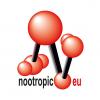Posted 04 March 2009 - 06:01 PM
Looking forward!
SEMAX®
A Revolutionary Neuropeptide
SEMAX® is a neuropeptide developed from a short
fragment of ACTH, Pro8-Gly9-Pro10 ACTH(4-10) and is a neuroactive peptide with unique neuroregulatory properties.
SEMAX® is a revolutionary addition to the arsenal of the Medical profession in combatting the disastrous effects of ischemic insults on the brain like the ones caused by Brain Stroke and closed head injuries.
SEMAX® administration allows significant increases in salvaging neurons, reducing the size of infarcts and permanent damage.
SEMAX® aids recovery and restitution of mental and motoric capacities after ischemic insults, improving the patient’s quality of life after the insult.
SEMAX® also influences the intellectual capacities and memory as well as concentration of normal, healthy persons subjected to stressful working conditions, increasing their mental capacities and diminishing the index of workload.
SEMAX® IS A NEUROREGULATOR, NEUROMODULATOR AND NEUROPROTECTOR
SEMAX® IS A REVOLUTIONARY CEREBRAL REVITALISATOR
SEMAX®
History and Background
SEMAX® is a neuropeptide developed by the Institute of Molecular Genetics; Russian Academy of Sciences, Moscow, Russia and “Lomonosov” University, Moscow . Research started in 1982 and involved over 30 scientists in the fields of Neurochemistry, Neurobiology, Neurology and Biochemistry from the Russian Federation.
The focus was on a short fragment of ACTH, Pro8-Gly9-Pro10 ACTH(4-10) and by dissociation of the combination of amino acids, substitution and special linkages a peptide was synthesized which had unique neuroregulatory properties.
Extensive testing over a period of 14 years resulted in the approval of the Russian Federation Ministry of Public Health and Pharmaceutical Industry on 28 March, 1996, for the clinical use of SEMAX® in the Russian Federation as a neuroactive peptide with endogenous regulatory properties affecting cerebral cellular processes which are beneficial in protecting and enhancing the recovery of cerebral functions after ischemic insults like : brain stroke, closed head injuries. Neurodegenerative processes like in Alzheimer’s disease, Parkinson’s disease and Huntington’s Chorea.
SEMAX® also influences the intellectual capacities and memory as well as concentration of normal, healthy persons subjected to stressful working conditions, increasing their mental capacities and diminishing the index of workload.
Pharmacology
COMPOSITION :
According to its structure, SEMAX® represents a synthetic analogue of the short fragment of Corticotropin, with no hormonal activities: ACTH (4-7) Pro-Gly-Pro.(Met-Glu-His-Phe-Pro-Gly-Pro)
The preparation is in the form of white crystalline hygroscopic powder, easily soluble in water. For clinical tests, SEMAX® was used in the form of nose drops (0.1% colorless transparent water solution with nipagin as conserving agent, in hermetically sealed bottles of 3.0ml, with pipette covers ,
pH = 4.0 - 5.5)
Pharmacological characteristics:
After intranasal application, 60-70% of SEMAX® is very quickly absorbed from the nasopharyngeal mucous membrane into the system circulation, thus as early as 1-5 minutes following its instillation the drug is accumulated in liver, adrenal glands, brain, heart, kidneys and skeletal muscles, which points to good distribution in the tissues.
Peak concentrations are achieved after 60 min.
Biotransformation develops through the action of aminopeptidases and angiotensin-converting enzyme to individual amino acids. Its half-life (t 1/2) is 4 min;
The therapeutic effect, after the application of a single dose, is maintained up to 20 hours. It is very rapidly excreted in urine via kidneys . Its half-life is : 0.4-5 minutes.
SEMAX®
Clinical and Technical Aspects
BIOLOGICAL EFFECTS OF SEMAX®
In the brain SEMAX® induces conformation changes in receptors of neurons comprising the Limbic Reticular complex leading to the increased generation of cAMP, c-GMP as well as of eicosanoids and certain oligopeptides: somatostatin, thyroliberin factor, cholecystokinin, dopamine, acetylcholine, serotonine, adenosine and histamine.
Semax® regulates the activating and inhibitory biosubstrate relation, NMDA receptors (glutamate, aspartate, glycine, taurine) in the central and peripheral nervous system, enhances the restitution of disturbed energy metabolism of neurons and their adjacent environment, returns the disarranged relation of neuron-astroglia function to normal, augments the activation of apoptosis inhibition, stimulates the modulation of synthesis of neurotrophins, proteins and other biosubstrates for the impaired neuron’s protection.
Semax® increases mRNA for NGF by 500% and for BDNF by 800%
(Shadrina M.I, et al)
Semax® inhibits the excessive generation of Nitic Oxide caused by cerebral ischemia.
(Bashkatova V.G; Armstrong D., et al)
Semax® increases the level of anti-inflammatory cytokines like IL-10, TGF-1ß and lowers the level of pro-inflammatory cytokines like IL-8 and C-Reactive Protein
(Myasoedov N.F., Skvortsova V.I., et al )
Semax® intensifies the expression of early genes that regulate and activate the adaptation process of the impaired neurons, it augments the activation of apoptosis inhibition by increasing levels of Bcl-2.
(E.Gusev and Skvortsova V.I)
Maria I. Shadrina, Oleg V. Dolotov, Igor A. Grivennikov, Petr A. Slominsky *, Ludmila A. Andreeva, Ludmila S. Inozemtseva, Svetlana A. Limborska, Nikolay F. Myasoedov /Neuroscience Letters 308 (2001) 115-118
Myasoedov N.F., Skvortsova V.I. et al,
“Mechanisms of Neuro-protective Effects of Semax® in the Acute Period of Ischemic Insult” Zh.Nevrol.Psikhiatr. Im., S.S. Korsakova, 99; 1999; 15-19
Valentina G. Bashkatova, Vladimir B. Koshelev, Olga E. Fadyukova, Alexandr A. Alexeev, Anatolii F. Vanin, Kirill S. Rayevsky, Igor P. Ashmarin, David M. Armstrong *
/ Brain Research 894 (2001) 145–149
* Corresponding author, Thomas Jefferson University , Wynnewood , PA 19096,USA
E.Gusev, V.I. Skvortsova, Proc. 6th European Fed of Neuological. Soc. Congress,Vienna,2002




















































